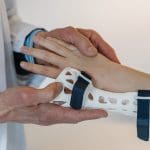
Building Resilient Orthopedic Practices: Strategies for Long-term Success.
At some point, nearly every orthopedic practice will stand at a crossroads where challenges and opportunities intersect. Regulatory hurdles, financial pressures, and the demand for exceptional patient care form a trifecta that defines the journey ahead. Navigating these complexities requires more than just clinical expertise; it demands resilience and strategic foresight.
With the right approach, these complexities can be transformed into opportunities for growth and innovation. This blog delves into essential strategies that can fortify orthopedic practices, ensuring they not only withstand the test of time but also flourish amidst the challenges.
Navigating Healthcare Challenges
Orthopedic practices today must contend with a host of challenges that can hinder growth and sustainability. These include:
-
- Regulatory Compliance: Adhering to ever-changing healthcare regulations can be daunting. Practices must stay informed and adaptable to ensure compliance.
- Financial Management: Balancing costs while delivering high-quality care is critical. Effective budgeting and resource allocation are essential for financial health.
- Patient Expectations: As patients become more informed, their expectations for personalized and high-quality care increase. Practices must innovate to meet these demands.
To navigate these challenges, practices should prioritize continuous education, invest in robust compliance systems, and foster a patient-centric culture that values feedback and continuous improvement. Engaging with professional networks and keeping abreast of legislative changes can also provide an edge in managing these complexities.
The Role of Advanced Technologies
Technological advancements are revolutionizing orthopedic practices, offering new opportunities to enhance clinical excellence and patient care. Implementing these technologies is crucial for long-term success.
Key Technologies Making a Difference:
-
- Telemedicine: Expands access to care and allows for remote consultations, increasing convenience for patients and efficiency for providers. Telemedicine also enables practices to reach underserved areas, broadening their patient base.
- Artificial Intelligence (AI): Enhances diagnostic accuracy and personalizes treatment plans, leading to improved patient outcomes. AI can also predict surgical outcomes and optimize resource allocation.
- Robotic Surgery: Provides precision and consistency in surgical procedures, reducing recovery times and enhancing patient satisfaction. Robotic systems can assist in complex surgeries, improving safety and efficiency.
- Electronic Health Records (EHRs): Streamline patient information management, improving coordination and reducing errors. EHRs facilitate seamless communication across healthcare teams, enhancing collaborative care.
By integrating these technologies, orthopedic practices can improve care delivery, streamline operations, and enhance patient satisfaction. Embracing these innovations positions a practice at the forefront of medical advancement, offering competitive advantages in patient care.
Practical Strategies for Achieving Long-term Growth
Building resilience in orthopedic practices requires strategic planning and execution. Here are actionable strategies to ensure sustainable growth:
-
- Foster Collaborative Partnerships
Joining forces with organizations like American Orthopedic Partners (AOP) can provide access to expanded resources and shared expertise. Collaborative partnerships can offer:
- Foster Collaborative Partnerships
-
- Access to cutting-edge technologies
- Opportunities for professional development
- Shared governance and decision-making processes
Such partnerships can also facilitate knowledge sharing, improving practice standards and outcomes.
-
- Invest in Staff Development
Empower your team by investing in ongoing training and development. This enhances skills, boosts morale, and ensures your practice remains at the forefront of the industry. Offering workshops and seminars on new technologies and treatment methods keeps staff engaged and informed.
- Invest in Staff Development
-
- Enhance Patient Engagement
Adopt patient-centric approaches that prioritize communication and engagement. Utilize patient portals and feedback systems to maintain strong relationships and improve service quality. Engaged patients are more likely to adhere to treatment plans and recommend your practice to others.
- Enhance Patient Engagement
-
- Optimize Operational Efficiency
Implement lean management techniques to streamline processes, reduce waste, and improve productivity. This can lead to cost savings and a more agile practice. Regularly reviewing and refining workflows can identify areas for improvement, maximizing efficiency.
- Optimize Operational Efficiency
-
- Embrace Innovation and Change
Stay ahead of industry trends by fostering a culture of innovation. Encourage staff to explore new ideas and technologies that can benefit the practice and improve patient care. Innovation should be an ongoing process, with staff empowered to contribute ideas for improvement.
- Embrace Innovation and Change
Looking Ahead: Embracing a Resilient Future
Building a resilient orthopedic practice requires a strategic approach that embraces technology, fosters collaboration, and prioritizes patient care. By navigating today’s challenges and implementing these strategies, practices can achieve long-term success in an ever-evolving healthcare environment. American Orthopedic Partners (AOP) stands ready to support practices on this journey, offering expertise and resources to help you thrive. Practices that adapt and evolve will not only survive but will lead the way in shaping the future of orthopedic care.













Sorry, the comment form is closed at this time.